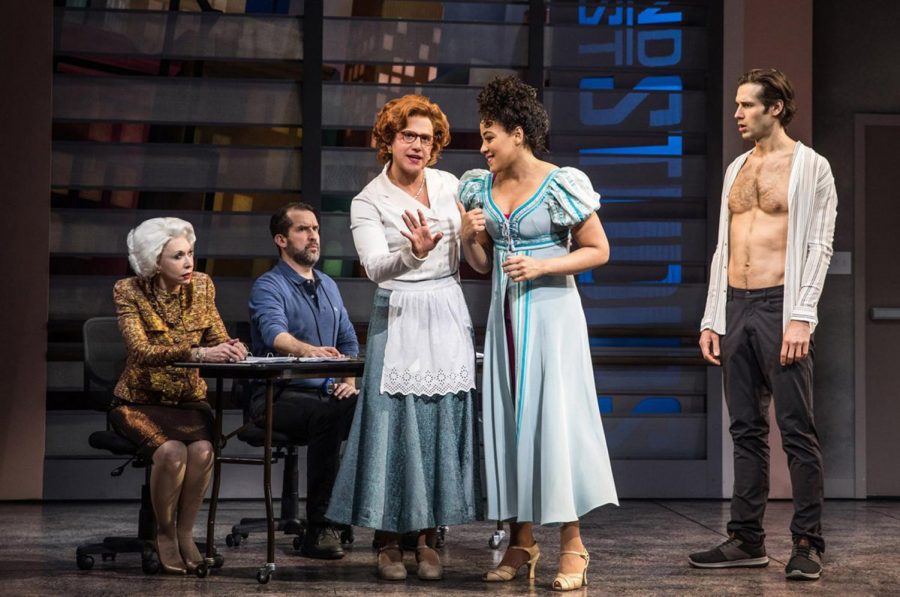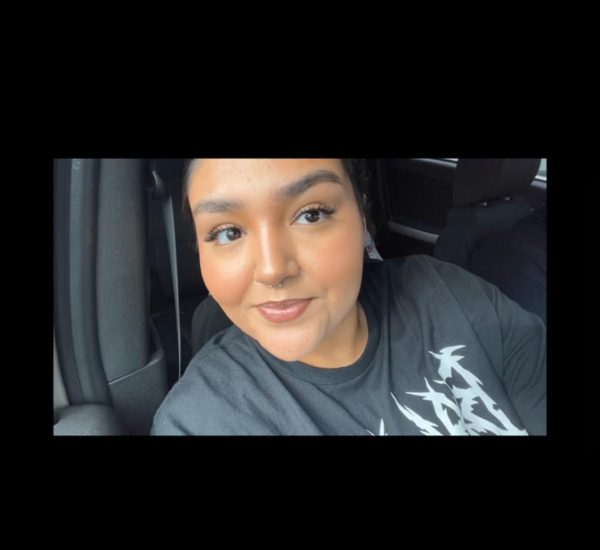‘Tootsie’ turns 1982 gender politics into a post-MeToo musical with 11 Tony nominations
June 7, 2019
NEW YORK — There’s a game-changing moment early in “Tootsie,” the new Broadway musical based on the 1982 film, when an iconic but dated comedy suddenly gets new life — and cultural relevance — in 2019.
In a first-act scene, lead producer Rita Marshall is meeting with her team, trying to rescue “Juliet’s Curse,” their foundering musical. She’s the only woman in the group, struggling to be heard, and when she gets a sensible suggestion from Dorothy Michaels — an out-of-work actor who has secretly dressed up as a woman to land a part — Marshall puts her foot down.
“I’m going to gamble on the smartest voice in the room, especially when it’s coming from a woman!” she says, silencing the protests of an obnoxious male director. “I’m the producer, and I write the checks!”
Welcome to the brand-new “Tootsie.” The musical earned 11 Tony nominations last week, including nods for best musical, director, book, score, lead actor and three featured performers. But long before the critical praise and awards-season love, Broadway producers knew they had to rework the original plot about a desperate, difficult actor who stops at nothing to get cast and in the end discovers what it’s like to be a woman. Dustin Hoffman’s performance was memorable, but given the #MeToo movement, the story line seemed patronizing and tone deaf.
Now, as a musical, “Tootsie” delivers a scathing satire of male narcissism in the American theater. In this version, women seize power and retain it. Marshall’s declaration of authority gets laughs and applause, because audiences are in on the cross-dressing joke. But there are additional ironies, onstage and off.
In real life, Carol Fineman, the show’s co-lead producer, has traveled a challenging road to reach a position few women attain. Less than 30 percent of the productions on the Great White Way in the last five years had women as lead producers, according to a survey by New York producer Ken Davenport. When Marshall lays down the law, Fineman savors the moment.
“We’ve made ‘Tootsie’ connect with a new age,” said Fineman, who was a successful Broadway publicist before becoming a Tony-winning producer with the 2015 revival of “The Color Purple.” “Today that means empowering women to tell their own stories and listening to them.”
Marshall’s onstage blast also resonates with Julie Halston, the veteran actress who plays the glamorous, wisecracking producer. After years in the trenches, she’s finally realized her dream of landing an original role in a musical — especially one telling the story of an older, outspoken woman taking charge.
A whip-smart comedian who won plaudits for her portrayal of socialite Bitsy von Muffling on “Sex and the City,” Halston said, “You’ve got three stories converging in this one scene about women coming into their own. It’s ‘Tootsie’ like you’ve never seen it before.”
To make this a reality, Fineman and her lead producing partner, Scott Sanders, assembled a stellar crew including composer-lyricist David Yazbek (Tony winner for best score last year for “The Band’s Visit”), book writer Robert Horn (“13” on Broadway, “Designing Women” on television) and director Scott Ellis (“The Mystery of Edwin Drood,” “She Loves Me”).
They also recruited an A-list cast, including Tony nominees Santino Fontana (as Michael Dorsey/Dorothy Michaels), Lilli Cooper, Sarah Stiles and Andy Grotelueschen, plus Reg Rogers, John Behlmann, Max Van Horn and Michael McGrath.
But the key challenge facing the team was to make a 37-year-old movie come alive onstage. It was telling a story where women’s voices aren’t just heard, they dominate — and Yazbek and Horn couldn’t do it alone.
Musical theater is a collaborative art, and the first draft of a show is subject to constant change as opening night approaches. The experience can be maddening. Larry Gelbart, who co-wrote the screenplay for “Tootsie,” once famously observed: “If Hitler is alive, I hope he’s out of town with a musical.”
Horn’s relentlessly hilarious book is one of the show’s highlights, but it too went through changes. Women — Fineman, Halston and others — weighed in often, helping to shape the script.
“Carol and Scott Ellis encouraged me to tell cast members, ‘I don’t know what I don’t know, so let’s talk,’” Horn said. “We had a weekly breakfast where she and I went over the latest version of the script, not just as a dramatic question but from a woman’s perspective.”
In an earlier version of the conclusion, for example, Michael Dorsey, now unmasked, apologizes to Julie Nichols, the leading woman with whom he’s smitten. He’s been a jerk and he’s sorry. But she’s not impressed. When she angrily asks why he keeps bothering her, he says he wants her to teach him how to be a better man.
That line raised a red flag for women in the cast. They said it wasn’t Julie Nichols’ job — or any woman’s job — to teach a man how to behave.
Now, the scene plays out differently:
Dorsey: I messed up. It was disrespectful and wrong. I know that now.
Nichols: No, you don’t. You think because you walked a mile in a woman’s shoes you suddenly know? Walk a hundred. Walk a thousand. And then fall a thousand more, because there’s so much you don’t know. About so much.
Dorsey: But I want to. Can we at least talk?
Nichols: What do you want me to say?
Dorsey: Whatever you want. I will listen.
“If nothing else, we’ve shown an audience how women feel and why men must respect that,” Fineman said. It’s a lesson she’s taken to heart in her career.
Rising through the ranks as a press agent, Fineman became chief publicist for Joseph Papp’s Public Theater in the mid-1980s. She also handled individual shows like “Jelly’s Last Jam” and “Elaine Stritch at Liberty,” ran her own agency and worked for the Barlow-Hartman publicity firm. During these years, Fineman had no way of knowing her path would lead to producing. Like so many stories on Broadway, hers was a matter of being in the right place at the right time.
Sanders, who would eventually be a Tony-, Emmy- and Grammy-winning producer, began his career staging high-profile concerts at Radio City Music Hall and helped launch Mandalay Television with Peter Guber. Forming his own production company in 2007, Sanders secured the rights to “Tootsie” in a deal with Sony Pictures Entertainment.
Fineman had worked with him as a publicist on the 2005 Broadway production of “The Color Purple,” and when he asked her to become a producer two years later, it was a big step up. Now, as co-lead producer with “Tootsie,” she’s taken the biggest step of all.
Whereas individual producers have specialties — like securing property rights, investing money and attracting talent — lead producers do all that and more. They get top billing because they’re the CEOs of a show, the ultimate source of power and responsibility.
No one taught Fineman the ropes, and being a woman entering a mostly male arena made the task harder. She had to figure things out for herself.
The small number of lead female producers isn’t just a troubling statistic, Davenport noted in his Producer’s Perspective blog. “If there were more,” he wrote, “there would, I’d bet, be more women directors, more women writers and more female stories on Broadway.”
Fineman said she was prepared because she learned early how to jump into tough situations, take charge and not feel intimidated. “That’s been a familiar experience for women in this world,” she said. “At the end of the day you learn how to make it work, because there’s no alternative.”
She also learned from the handful of lead female producers who blazed a trail on Broadway, including Daryl Roth, Liz McCann, Carole Shorenstein Hays and Sonia Friedman. Their number is growing, Fineman said, and as more take the reins there are more opportunities for an actress like Halston to shine.
Indeed, her performance as Rita Marshall won raves in the musical’s tryout run in Chicago. One reviewer called it “a campy-crusty turn that marries Joan Rivers and Lew Wasserman.”
A Drama Desk and Outer Critics Circle award nominee, Halston has 33 film and TV credits and appeared on Broadway in “Hairspray,” plus revivals of “Gypsy” and “You Can’t Take it With You.” She was a founding member of Charles Busch’s Theatre-in-Limbo company, starring in plays including “Vampire Lesbians of Sodom” and “Red Scare on Sunset.”
For all that experience, it took her years to book an original musical. She’s heard too many stories about people sleeping with someone to get a part then failing to get cast.
“Today, those stories would get someone fired,” she said. “Times are changing, but there’s a long way to go.”
All the more reason for Halston and Fineman to savor the high points in their show.
“I love the fact that Carol Fineman is one of the lead producers because she came up through the business and so did I,” Halston said. “I think we’ve always been gals that people respect, but the spotlight was always somewhere else. Now it’s on us, there’s no getting around it. And you know what? It’s about time.”
———

















